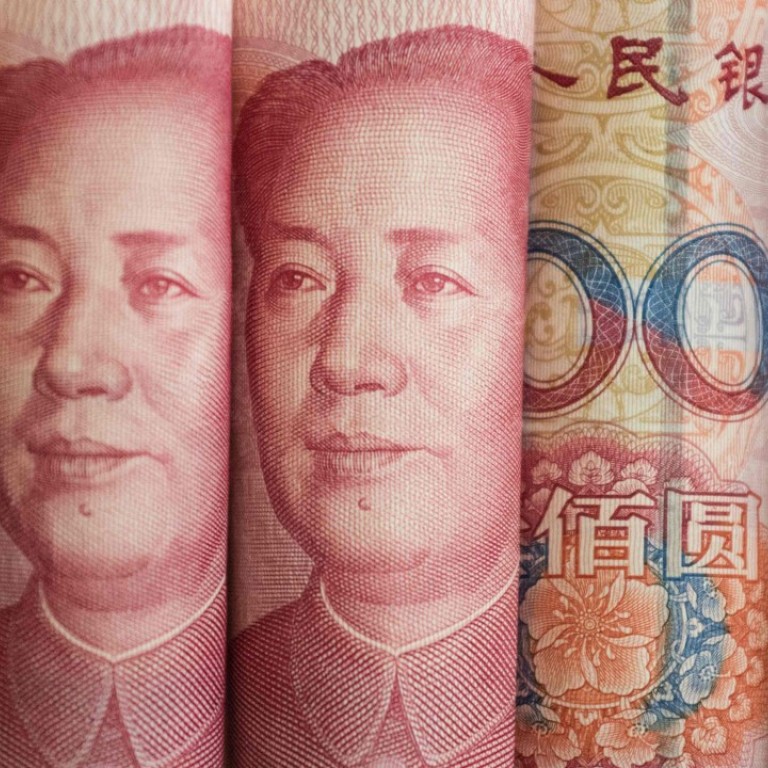
Why China must curb state spending as well as lending to tackle its debt problem
Zhang Lin argues that plans for fiscal expansion risk undermining the effort to reduce borrowers’ exposure
China’s total debt has reached 261 per cent of its GDP, financial risk is accumulating and the government is trying to tighten the credit supply to reduce borrowers’ exposure.
Almost all the macroeconomic indicators, including infrastructure investment, industrial output and retail sales, weakened in recent months, painting the gloomiest picture of Chinese growth since 1989.
The deleveraging campaign, focusing on financial institutions, has contributed to a sharp slowdown in real GDP growth.
At current debt levels, all the country’s economic output would be needed to repay loans at an average interest rate of 4 per cent.
Top Chinese think tank sees mild slowdown ahead as risks surface
At the same time, China’s fiscal revenues maintained their rapid growth – tax revenues increased by 15.8 per cent in the first two months of 2018 from a year earlier while land sales revenues, officially defined as land transfer income, shot up by 40 per cent in the same period.
Beijing’s financial deleveraging is the right move because an excessive supply of credit will only worsen the country’s debt problem and do little to help productivity.
But China's fiscal expansion is an error because the government’s balance sheet expansion can facilitate borrowing.

These two goals – fiscal expansion and financial deleveraging – are contradictory and, if implemented simultaneously, will only lead to distortions.
Compared with other economies, China’s state is much more powerful in directing economic activities. The government’s revenues finance not only public goods but also investment projects – sometimes through state-owned enterprises.
In China, there are four sources of government income: namely the general public budget, government funds, state-owned capital operating funds and social security funds.
Part of the public budget, all the government funds and all the state-owned capital operating funds are used for investment activities.
For example, local government funds spend about 4 trillion yuan (US$600 billion) each year in infrastructure and municipal utilities.
Beijing softens tone on debt crackdown as trade tensions threaten growth
These fiscal funds are often just “seed money” for grand projects.
State companies and local governments will scramble to borrow via bank loans and bonds to complete the projects. In this way, the overall debt in Chinese economy gets bigger and bigger.
Since infrastructure and municipal projects offer low returns, many of the debts incurred by local governments and state companies are relying on rollovers or bailouts further down the road.
A study of China’s fiscal revenue growth and M2 growth since 1991 found a strong positive correlation between the two – broad money supply growth has always peaked two years after fiscal growth.

For now, however, China is squeezing the financial sector to cut debts but allowing the government to reap revenues and to spend money more than ever – it is like conducting surgery on the financial system when the real disease is at the government level.
Meanwhile, the “margin utility” of fiscal expenditure, or efficiency of government spending, is waning. The theories of John Maynard Keynes for bolstering growth are effective for a depressed economy but less so for an overcapacity one like China.
A study of Chinese economic data from 1991 found that the share of fiscal expenditure in economy is in reverse correlation with the headline GDP growth rate.
In other words, the higher the fiscal expenditure in the economy, the lower the overall growth rate.
The coefficient between government income growth rate and GDP growth rate is a negative 1.4. It means that for every percentage point contributed by fiscal spending to growth, it at the same time wiped 1.4 percentage points off growth.
The reason is that inefficient state spending will “squeeze out” more efficient private investment.
It is clear that China’s debt risk comes from its state-sanctioned economy.
Beijing’s current deleveraging campaign to curb credit in the financial sector and clip the wings of the banks can only achieve temporary results.
The real answer is to lift the Chinese economy from the shackles of trade is to cut tax and shrink the government’s own balance sheet.
Zhang Lin is a researcher with Beijing-based Unirule Institute of Economics.

